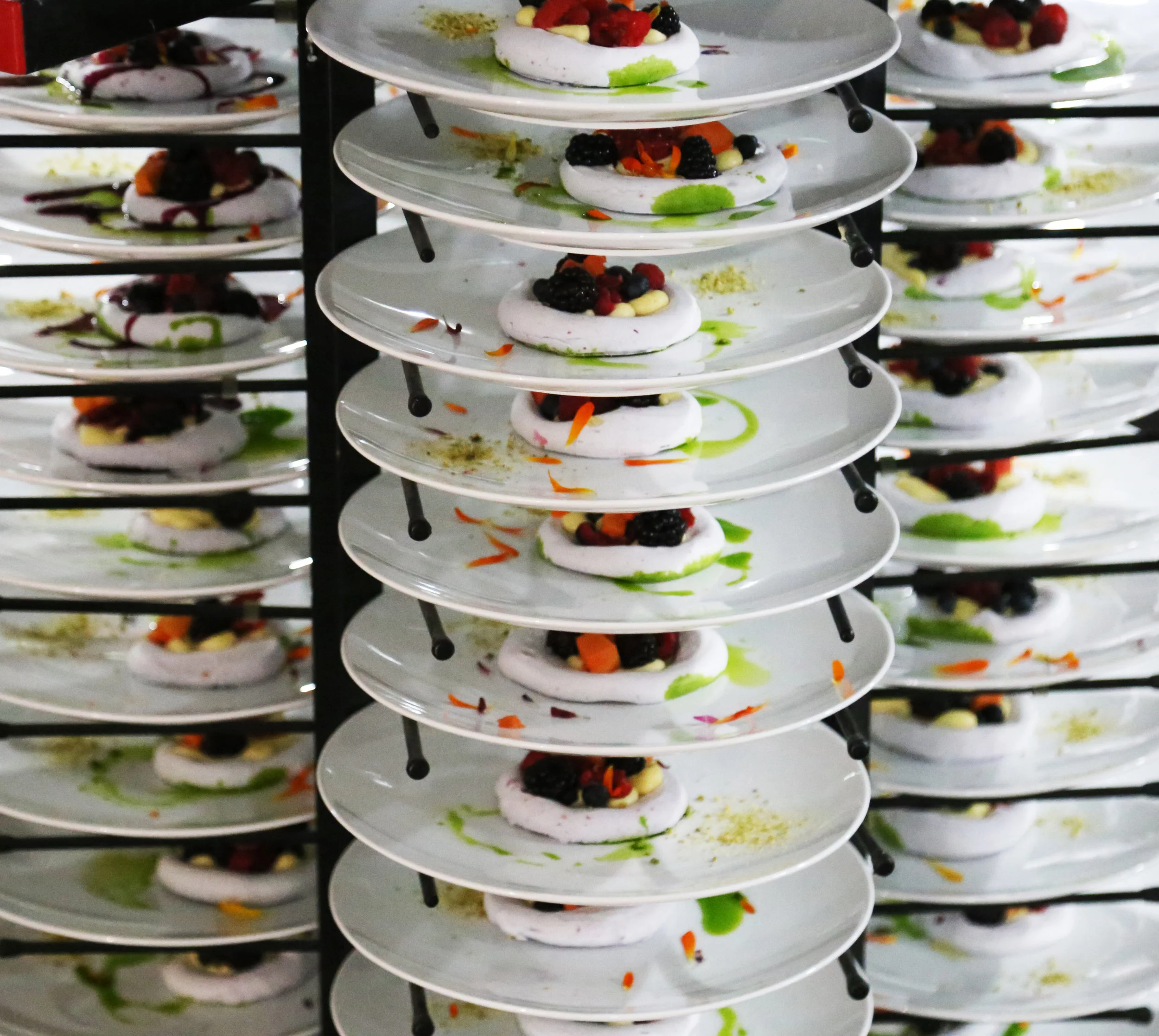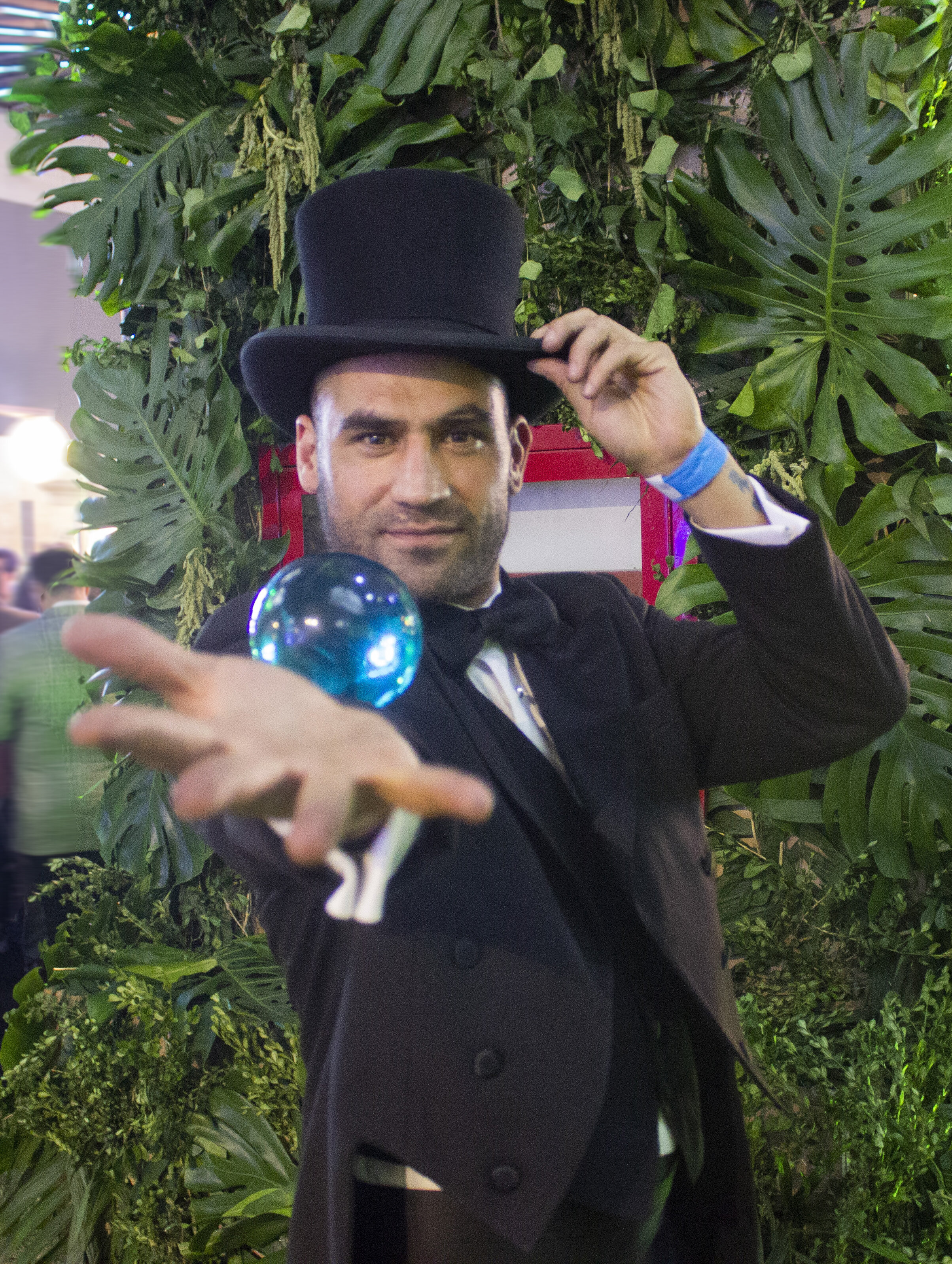Millesime 2015 : Send in the Clowns
It was another day at Millesime 2015, Mexico’s highest falutin’ food fair. In the vacuum-sealed power space of the Banamex Center the crème de la crème milled, mingled, drank and ate...and drank...and ate. But the soufflé never fell at this vast high-society foodie coming-out affair. At this cotillion, however, the debs were replaced by Mexico's best chefs and purveyors of fine wine, chocolate, cheese and other princely products. The potential beaux being wooed were moneyed guests, many of them corporate, who shell out copiously to partake of the decadent display of epicurean delights. I was told by the event’s founder and designer, Colombian architect Mauricio Galeano, that the French word ‘millesime’ refers to the moment when a wine is at its best. The fair first took place in Madrid but Spain’s dire economic situation hit concurrently and the event fell flat. It did take root in Mexico, however, where crisis always hovers like a hungry vulture, but never seems to affect the haute monde as it did in the old country.
“This is the fucking top,” exclaimed Galeano waving a flute of Moët rosé champagne. “We wanted this to be a social event about gastronomy. It’s about business, but deals aren’t cut here: friends are made.”
Indeed they were as I spent three booze and chow packed days schmoozing with exalted chefs and ordinary mortals alike. The space, whose design scheme was “Le Cirque”, was elevated from pre-fab generic-ness by a team of distinguished designers and architects. But Circus elements were only fleetingly referred to in signage or decorative elements. An air of elegance was conveyed, nonetheless. Hollywood-set-like spaces were created for fancy dinners, to which guests were sent daily at 3 p.m. prepared by a bevy of French and native cooks.
I was privy to one of these repasts, rather perplexingly entitled Batea. Outside the entrance, a welcome sign done in Barnum & Bailey script cryptically reflected on kitsch and war. Diners paid little heed as they were ushered in and seated at the sumptously set tables. The scene recalled less a big top than a tasteful wedding reception.
“Where are the clowns, just send in the clowns… ” I hummed to myself, trying to maintain a respectable aspect after half a dozen glasses of very good French, Spanish and Mexican wines, topped by a shot of $1000 mezcal thrust at me by an eager purveyor. The dinner, cooked by local chef Edgar Núñez of the lauded Sud 777, and three invited Frenchmen, Jean Remi Caillon, Jean-Jacques Noguier and Sébastien Vauxion, was, considering the compromised circumstances and improvised kitchens, quite good.
Núñez wisely stuck to what he knows, that is, post-modern presentations of classic Mexican dishes such as duck with black mole, and a light salad of artichokes with tangy cotija cheese. Les chefs français shone brightly when they stayed French – a sweet pea cream with almonds and lightly smoked salmon was divine. But Caillon's fanciful concoction of beef with foie gras, bathed in a faintly Asian broth, didn’t coalesce. It was called a “taco” but my neighbors and I searched in vain for tortillas with which to scoop it up. Astutely chosen and eagerly touted wines were paired with each course – a standout was a minerally red called Habla from Extremadura in southern Spain. It went well with the mole, a dish that is rarely paired correctly. As portions were parsimonious, but libations flowed freely, guests left happier than when they arrived.
Outside, in several confusingly similar looking halls lined with stalls, seating areas, bars--and more bars--the increasingly potted attendees roamed about, glasses in hand, tasting tapas-size treats displayed in eye-catching groupings from several dozen of Mexico’s best restaurants. Quality was brilliantly maintained by chefs who knew their exigent clients might succumb to fierce competition from those nearby. Chef Pedro Evia, whose K’u’uk in Mérida offers post-modern Yucatecan cooking, and who had attended three previous editions of Millesime, explained that “It’s the best event for me because there are clients here who can travel and afford the best of everything. It’s all about connecting with clients, other chefs and purveyors.” He offered a platter of ten jewel-like tostadas of seafood from the Gulf of Mexico that glistened like a display at Tiffany’s.
The dashing Javier Plascencia, sole representative of Baja California’s thriving culinary scene, oversaw his stand with panache, patiently explaining over and over that his three pretty pintxos were composed of yellowtail, one sashimi style with seaweed-infused oil, the second sautéed with eggplant and the third an Asian oriented ceviche in coconut milk. The third day found him still hard at work but visibly weary.
Nearby, a Thai chef from Mayakoba, a resort somewhere on the Riviera Maya, prepared the best Thai salads and Massaman curry I’ve sampled in this country. Our interview was curtailed as she seemed baffled by both English and Spanish and only brightened up when I hauled out my few rusty phrases of Thai. This was the only food that didn’t directly refer to Mexican tradition but it was "arroy ma" as they say in Bangkok. Any potential tedium brought on by endless noshing imbibing and air-kissing was enlivened by a number of awards ceremonies and presentations, highlighted by the bestowing of honors on four emerging young chefs. The youngest, 25 year old Gabriela Ruiz accepted the trophy holding back tears of joy. She has, against all odds, opened a restaurant in the Tabascan town of Villahermosa, a decidedly unlikely place for a sophisticated venue. She features exotic local products and explores regional culinary traditions. Gabriela is representative of the new Mexican chef who, like another contender, Francisco Molina of Tlaxcala’s Evoka, have proven that there is a market for high end cooking beyond the borders of the Federal District, and are willing to take on a risky provincial venture. Bravo! As evening approached--a fact of which most were unaware in this windowless ediface with its Vegas-esque, mind-lulling atmosphere--several workshops and tastings were offered. The talented chefs of downtown’s best contemporary Mexican venue Limosneros, Marcos Fulcheri and Carlo Melendez, demonstrated the preparation of upscale tacos that were paired with good wines. Tastings of mezcal, wine and beer drew full houses of patrons eager to sit after hours of roaming.
The third day drew to a close with bedraggled survivors foraging for gin and tonics, beer, champagne and mezcal as supplies dwindled. At about 10 p.m. they gathered for one last blast in the huge, DJ-enlivened club-like space set aside for partying and smoking. As closing time came and went, guests refused to leave, or perhaps were unable to. Like the revelers in Buñuel’s The Exterminating Angel, they were compelled by some existential force to stay. That’s because the event, be what it may, was by all accounts a smashing success in a business and social kind of way. I think they call it 'fun'.
As lights were turned up, our group headed off to the St. Regis’ tony Candela Romero for the final “after” party. Relieved chefs let their hair down and got smashed; I left at 3 a.m. But for all I know, the party may still be going on. "Where are the clowns? There ought to be clowns. Well maybe next year."
See: Millesime 2016: It's a Party









